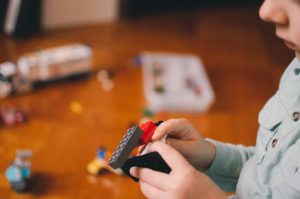Autism Spectrum Disorder (ASD) is estimated to affect one in 68 children. It’s a diagnosis that wasn’t well-understood or extensively researched until the late 20th century (massgeneral). ASD affects the way a person communicates, behaves, and interacts with other people, and everyone with ASD experiences it differently. Some people diagnosed with ASD can live fully independent lives with little to no support from others while some others require daily assistance (CDC). It’s a complex disorder that many people have misconceptions about. Since the month of April is Autism Acceptance Month (formerly called Autism Awareness Month), let’s take a moment to better understand what it means to live with ASD (Autism Society).

It’s a common myth that Autism Spectrum Disorder is caused by the parents of the diagnosed child. Research has shown that, although the exact causes of ASD are unknown, parental behavior at any stage of the child’s development before or after birth is definitely not a cause of ASD (massgeneral).
Autism Spectrum Disorder, as mentioned before, is not the same for everyone who is diagnosed. Though many people associate certain behaviors such as lack of eye-contact or verbal communication with ASD (massgeneral), these behaviors don’t necessarily appear in everyone diagnosed with ASD. Some people with ASD may have excellent communication skills or some may experience a deficit in certain skills (CDC).
Studies show that there are differences in how males and females experience autism spectrum disorder. As a result of this, many female children often go undiagnosed until later stages in life compared to male children. Autism Spectrum Disorder continues to be understudied in how it affects females (massgeneral).
Signs of Autism Spectrum Disorder often appear before the age of three and can appear as early as 12 months (CDC). Early diagnosis has been shown to have positive effects on the development of some children with ASD. As stated by MassGeneral for Children, “The earlier autism spectrum disorder is diagnosed and treated, the better. Outcomes for children’s lives are significantly improved with early diagnosis and treatment. (massgeneral)”

In the United States, once someone with Autism Spectrum Disorder reaches adulthood, many of the services guaranteed to them as children disappear, leaving them and their families unassisted in later stages of life. This abrupt change can make those affected by Autism Spectrum Disorder feel overwhelmed (massgeneral).
As of right now, there is no medical detection for Autism Spectrum Disorder. To diagnose ASD in children, a child neurologist, child psychologist, or a developmental pediatrician will complete an in-depth evaluation and provide a diagnosis when appropriate. Parents who believe their child may have ASD should also call their state’s public early childhood system for a free evaluation to determine if their child qualifies for intervention services. Parents don’t need to wait for a diagnosis to make this call. Early intervention may help improve the child’s development (CDC).
A diagnosis of Autism Spectrum Disorder is by no means a definitive sentencing to a more difficult life. People diagnosed with ASD have the potential to lead rich and fulfilling lives alongside friends, family, and colleagues. The best way that we can become sources of support for someone with ASD is to educate ourselves on what it means to have ASD and therefore better understand how to help someone with the disorder.
Written by: Matthew Jenkins
Date: May 7th, 2022
Sources:
